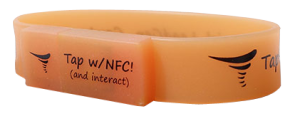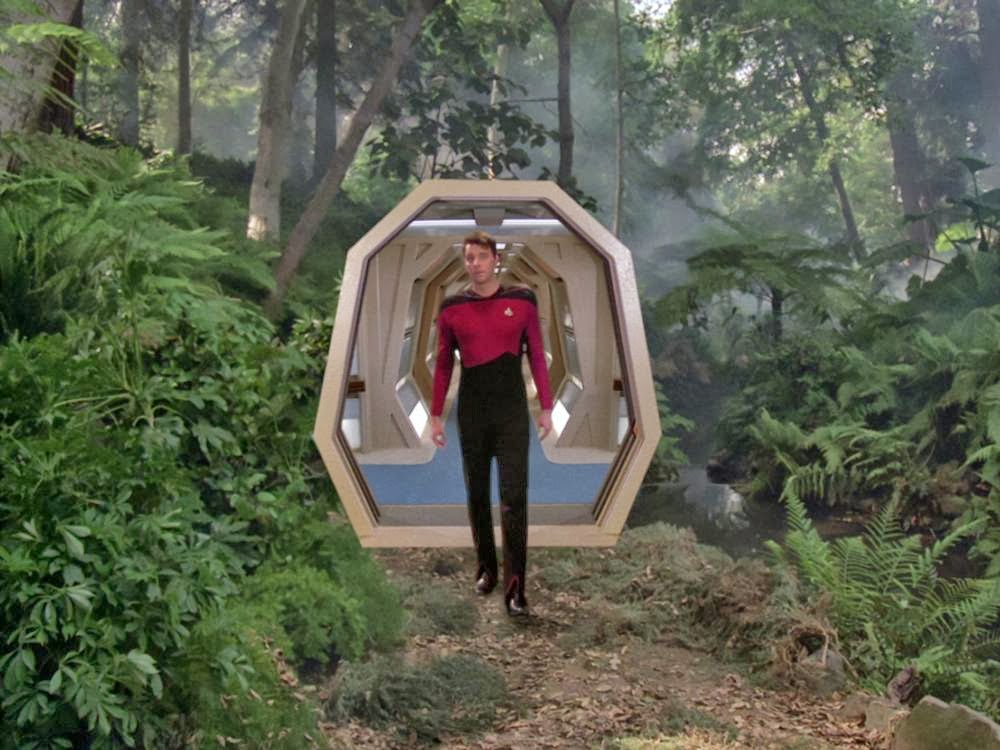There is a coming boom in products that bridge the virtual world and the real world. Wearable technologies, augmented reality (AR) and beacons are some of the new tech that is making waves, so what can marketers take advantage of today to create unique customer experiences?
Wearable Technologies
Google Glass, Oculus Rift, Kinect, and the newest in augmented reality headgear, Microsoft HoloLens, released just this past week, promise a future where we will be interacting with hologram images ala Star Trek holodecks. The Apple Watch, to be released this Spring, promises a smaller version of an iPhone on your wrist and Android Wear devices are out right now. While where we are at today with wearable technology is not so futuristic, there are still some neat opportunities for marketers to take advantage of without breaking the bank.
One wearable technology that is available now for enterprise customers, and at a reasonable cost, is something that we offer called TapGear. TapGear takes advantage of Near Field Communication (NFC) technology to allow a user to simply tap their NFC-enabled mobile device (tablet or smartphone) against a wristband, hat, shirt, hoodie, shoes, belt, or any wearable that you desire, to launch a mobile web-browser site. For example, a band can sell t-shirts that drive mobile engagement to an exclusive landing page, featuring their tour schedule, back-stage interviews, music downloads and videos, eCommerce catalog, drawing for free concert tickets, and more.

![]() Tappable wristbands, shown above, offer a unique experience for event marketers, both for those that put on the event and for those who participate in them, such as vendors with booths at a tradeshow. Tap wristbands include both NFC technology as well as a low-tech USB plug. The branded wristband can be assigned to attendees upon registration at an event. Attendees then visit various areas at the event and tap the wristband on NFC-enabled smartphones held by brand ambassadors or against a kiosk for self-service. This then records user engagement and transfers marketing materials to the wristband, accumulated in their web-based profile. The event organizer can later access this information to assign points to activities for participation prizes, and the attendee can plug the wristband into a computer to download the materials received.
Tappable wristbands, shown above, offer a unique experience for event marketers, both for those that put on the event and for those who participate in them, such as vendors with booths at a tradeshow. Tap wristbands include both NFC technology as well as a low-tech USB plug. The branded wristband can be assigned to attendees upon registration at an event. Attendees then visit various areas at the event and tap the wristband on NFC-enabled smartphones held by brand ambassadors or against a kiosk for self-service. This then records user engagement and transfers marketing materials to the wristband, accumulated in their web-based profile. The event organizer can later access this information to assign points to activities for participation prizes, and the attendee can plug the wristband into a computer to download the materials received.
If you prefer using a TapCard or tappable tradeshow badge instead of a Tap Wristband, we offer these as well with NFC and USB-plugs.
Augmented Reality
While most of us are not ready to start designing AR worlds for the new headgear, we can still take advantage of augmented reality for mobile devices. We can help you get  setup with this type of AR promotion, which allows customers to scan any of your printed items, products, even online videos or website, using a mobile app that they download and use with their device’s camera. When launched, one or more digital, interactive images appear over the printed image.
setup with this type of AR promotion, which allows customers to scan any of your printed items, products, even online videos or website, using a mobile app that they download and use with their device’s camera. When launched, one or more digital, interactive images appear over the printed image.
The image shown to the right is an example of AR in action. A real estate publication, with augmented reality applied, can be scanned so that images appear on top of the page, allowing the user to interact with each of the home listings individually; viewing photos, website links and contact information for the agent. It also can deliver video, audio, polls and promotions.
So Which Should I Use: USB, Near Field Communication or Augmented Reality?
When you should use USB:
- When you are looking to drive traffic to a web page, with documents, video and other downloadable collateral, for manipulation on a computer.
- When you want to be sure that everyone who gets the promo item will be able to view it.
When you should use NFC:
- When you want to create landing pages that captures user data.
- When you want to create individualized customer experiences, tied to their user ID.
- When you do not wish for the user to have to download an app for it to work, however, not everyone has current mobile devices with NFC technology (see list of devices that are compliant here).
When you should use AR:
- When you want to provide the same experience for all users.
- When capturing specific user information and activities is not necessary.
- When you want to take advantage of the fact that most people now have access to a mobile device’s camera and you understand that the user has to download an app for it to work.
Or if you want to go really crazy, you can get USB, NFC and AR all on the same item!
Beacons
Beacons take advantage of BlueTooth Low Energy (BLE) technology — which is  becoming a standard in smartphones — for creating opt-in, proximity-based interactions. Smartphones that come into proximity to beacons engage a client app that is already installed on the device, pushing messages to the user using in-app notifications or SMS/text messaging.
becoming a standard in smartphones — for creating opt-in, proximity-based interactions. Smartphones that come into proximity to beacons engage a client app that is already installed on the device, pushing messages to the user using in-app notifications or SMS/text messaging.
We offer branded beacons, imprinted with your logo or other design, in 1 to 3 inch sizes, square or rectangular, and we also provide the app for push marketing. Beacons can be placed in physical locations either visibly or invisibly (which may affect your desire to brand them), such as around a tradeshow floor or retail store. The smaller beacons can be attached to personal belongings as a Keychain Beacon, which sends a signal to your smartphone when you walk away from whatever the beacon is attached to (your purse or a child’s car seat, perhaps?).
Examples of use include digital scavenger hunts during an event, where attendees visit different areas or tradeshow booths, and a message will pop-up that they earned points towards the scavenger hunt. You can even push marketing materials to attendees at the beacon interaction points, which the user can choose to accept onto their mobile device or not.
What really has people excited about beacons is their use in retail marketing. The ability to send real-time, contextually relevant messages to users makes companies with store fronts and product aisles drool. It doesn’t even have to be their store front or product! Companies and brands can use beacons to send messages to try to draw customers away from competitors’ stores and products in the aisle.
Beacons are now being used to store information, such as what products someone is looking at in a store, which can then be used in a later post-shopping ad campaign when they are on their computer. Think re-targeting campaigns that use real world experiences to follow the buyer online with a marketing message.
Let us help you bring some of the future into your marketing today. Contact us to talk about any of the products that we offer.
%CODE_subscribe%



